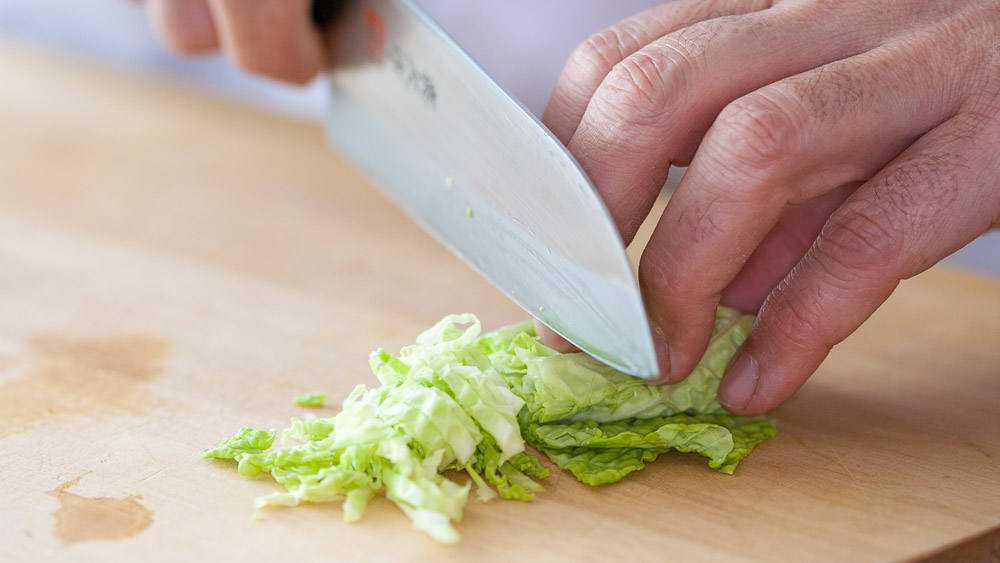What Grit Whetstone for Chef Knife: A Comprehensive Guide for Barbecue Enthusiasts
Written By James Morgan
When you think of barbecue, the smoky aroma of grilled meats often comes to mind. For barbecue enthusiasts, a sharpened chef knife is indispensable, ensuring precise cuts whether you're slicing brisket or chopping vegetables. But what grit whetstone for chef knife should you choose to keep your blade in top-notch condition?

The Importance of a Sharp Chef Knife
A sharp chef knife is crucial for barbecue aficionados. It ensures that you can make clean, efficient cuts, reducing preparation time and enhancing the overall quality of your dishes. Whether you're preparing a hearty rack of ribs or delicately slicing fruits, the sharpness of your knife is paramount.
Using a dull knife can be frustrating and dangerous. It requires more force to cut through ingredients, increasing the risk of slipping and injuring yourself. Moreover, a dull knife can tear through the meat, resulting in uneven cuts and affecting the texture of your dishes.

Understanding Whetstones and Grit Levels
Whetstones, or sharpening stones, come in various grit levels, each suited for different sharpening needs. Grit levels determine the abrasiveness of the stone, affecting how much material is removed from the blade. Here's a breakdown of the different grit levels:
Coarse Grit (200-600)
A coarse grit whetstone is ideal for repairing damaged edges or reshaping a blunt blade. If you have a nicked or chipped knife, starting with a coarse grit will help restore the blade quickly.
Medium Grit (800-2000)
A medium grit whetstone is suitable for general sharpening tasks. It's perfect for maintaining a sharp edge on your chef knife, ensuring it's ready for your next barbecue session. Most barbecue enthusiasts will find that a medium grit stone meets their regular sharpening needs.
Fine Grit (3000-8000)
A fine grit whetstone is used for polishing the edge and achieving razor-sharp precision. This level of sharpness is often preferred by professional chefs and those who take their barbecue seriously. It provides a finely honed edge that can effortlessly slice through delicate meats and vegetables.

Choosing the Right Whetstone Grit for Your Chef Knife
To determine what grit whetstone for chef knife suits you best, consider the condition of your blade and your sharpening goals. If your knife is heavily damaged or very dull, start with a coarse grit before moving to a medium or fine grit for a polished finish.
For regular maintenance, a medium grit whetstone is generally sufficient. However, if you desire an ultra-sharp edge akin to those used by professional barbecue chefs, investing in a fine grit whetstone will elevate your cutting precision.

Sharpening Your Chef Knife: Step-by-Step Guide
Step 1: Submerge the Whetstone
Before sharpening, soak the whetstone in water for about 10-15 minutes. This ensures proper lubrication, preventing excessive friction and heat during the sharpening process.
Step 2: Establish the Angle
Hold your knife at a consistent angle (typically 15-20 degrees) against the whetstone. Maintaining a steady angle is crucial for achieving an even edge.
Step 3: Begin Sharpening
Using gentle pressure, slide the blade across the whetstone in a sweeping motion, alternating sides. Start with the coarse grit if needed, then move to the medium and fine grits for a polished edge.
Step 4: Test the Sharpness
After sharpening, test the knife's sharpness by slicing through a piece of paper or a tomato. A properly sharpened knife should glide through effortlessly.
Additional Tips for Knife Maintenance
Maintaining your chef knife goes beyond just sharpening. Here are some additional tips to keep your knife in pristine condition:
- Avoid cutting on hard surfaces. Instead, use a wooden or plastic cutting board to prevent dulling the blade.
- Hand wash only. Avoid putting your knife in the dishwasher, as the harsh detergents and heat can damage both the blade and handle.
- Store properly. Use a knife block or magnetic strip to store your chef knife, preventing unnecessary contact with other utensils.
FAQ
-
Q: How often should I sharpen my chef knife?
A: It depends on usage. For regular barbecue enthusiasts, sharpening every 2-3 months should suffice. -
Q: Can I use the same whetstone for different knives?
A: Yes, but ensure proper cleaning between uses to avoid cross-contamination. -
Q: Do I need a honing rod in addition to a whetstone?
A: Yes, a honing rod helps maintain the edge between sharpening sessions.
Read More
External Resources
- Safely Cut Fruits and Vegetables
- Knife Skills Cutting Technique
- Cut Food Like a Pro
- How to Use a Chef's Knife
- Fancy Cutting Techniques
As an Amazon Associate, I earn from qualifying purchases.



